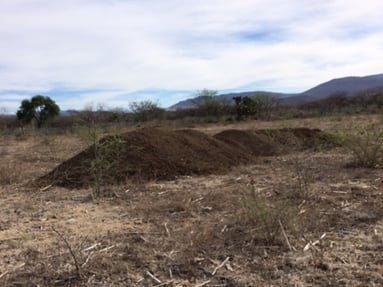In an previous article, one of our readers asked in the comments section about "pre-emergent selective chemical herbicides for weed control for the cultivation of the agave, or the one that affects the crop the least, as well as of a fungicide to prevent or control fusarium". It seemed to us such a pertinent question, that we decided to give it an answer as a blog post, so that it remains at hand for any other reader who may have the same question.
Without further ado, this is the response of our experts.
Herbicides and fungicides in agave cultivation
Herbicides
In the case of the agave, several herbicides are used, both pre-emergent and post-emergent. We can find in the market different products that can be used in the crop and in the case of the pre-emergent, if they are applied to the ground exclusively, without wetting the agave leaves, they won't cause serious damage to the crop. However, there are no selective products for the agave and, if any of them is indeed absorbed by the roots (those with high solubility), they will affect and weaken the agave.
Those that have been used during different times and that have caused various damages such as chlorosis, weakening, reduction in growth rate, are:
- Tebutiuron
- Bromacil + Diuron
- Diuron -not combined, by itself
- Acetochlor
- Imazapic
Yet, if they are applied correctly and in the appropriate doses (correct calibration) the damages can be minor.



The phytotoxicity of some of these products can be reduced based on their application, looking for ways or adjuncts to reduce the wetting of the young leaves of the agave, since they are the ones that absorb the greatest amount of agrochemicals, unlike the older leaves.
Fusarium sp and other pests
So far, it hasn't been possible to demonstrate that Fusarium oxysporum is the only cause of the wilting symptom of the agave, although some species of Fusarium sp or strains of Fusarium oxysporum are invariably found in withered plants. In general, it has been observed that whenever aggressive herbicides or those that can damage roots are used, the plants show wilting symptoms after the third year (mostly at the fourth year).
When an agave plant is colonized by cerambycidae or white worm, or damaged by rhinoceros beetle between the first and third year, wilting symptoms are also detected around the fourth year. When a plant is affected by any of these insects and an aggressive herbicide (pre or post-emergent) is applied, the symptoms become even more evident and serious.


Various studies have found that the application of natural enemies to Fusarium, such as Trichoderma sp and Bacillus subtilis, reduces the colonization of Fusarium at the root. However, in many occasions the wilting doesn't decrease due to borer insects, herbicides or to the flooding of certain areas.
It's also been detected that applying compost fosters the development of microorganisms that are natural enemies of Fusarium sp.

Integrated crop management
In general, it's important to have an integrated crop management, considering that:
- If the land where the agave is going to be planted shows areas in which water may flood, it must be conditioned to avoid those water-loggings.
- The agave offshoots must come from healthy plantations and shouldn't show damages caused by insects or red spots at the cut that's made to detach them from the mother plant.
- If the soil has a pH lower than 6, lime will be required (according to laboratory analysis).
- Insects should be monitored throughout the year to control them in a timely manner.
- We must be careful with the application of herbicides, since the agave is very sensitive to most of them and some may cause very strong damages such as bud rot and root death, yet in general, when applied directly to the agave, the symptoms show after two months.
We hope that the questions of our reader were fully answered with this blog post. Subscribe to our blog about tequila production processes, so that you stay updated with our information. You can also come to Casa Sauza and take one of our guided tours so you can learn more about how our tequila is made, from the plantation of the agave, to bottling of the spirit.
.png?width=50&height=50&name=10.CS-Redondo%20(1).png)
